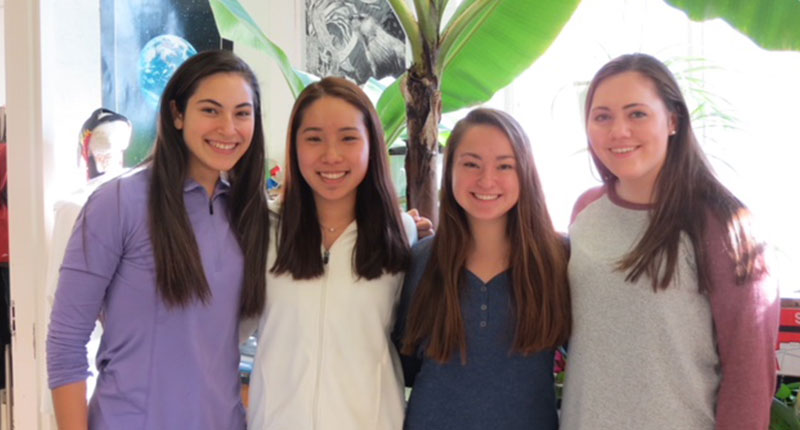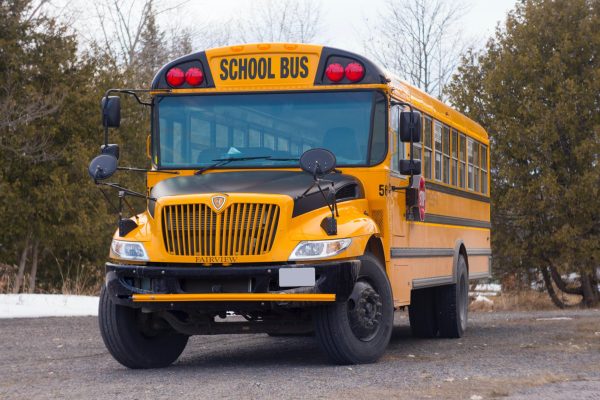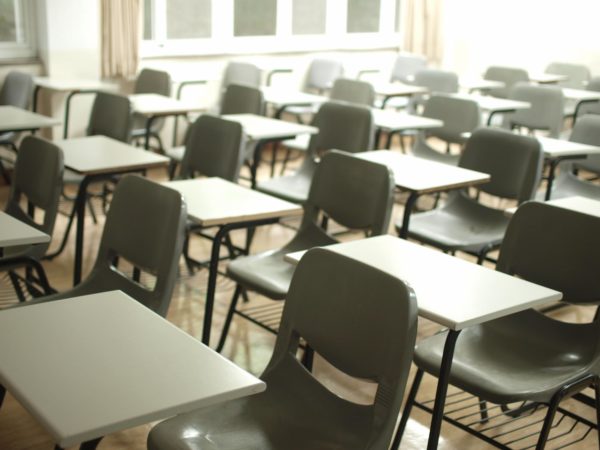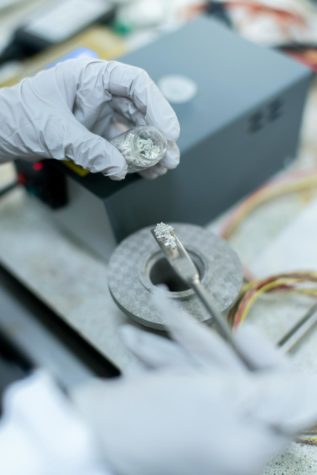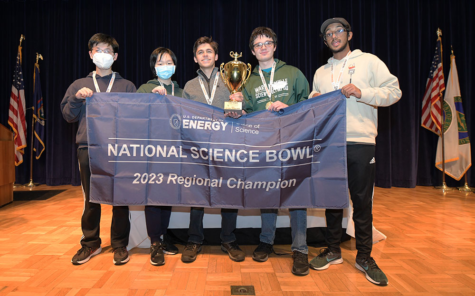Four Seniors Named Regeneron Scholars
February 1, 2019
January 9th– In Ward Melville’s InStar classroom, numerous student researchers excitedly awaited the results of the 2019 Regeneron Science Talent Search (also referred as Regeneron STS).
This year, four students were named as semifinalists in the Regeneron STS. Each semifinalist received a $2000 award and another $2000 donated to our school’s science, engineering and math education services. Over a million dollars were given out in total to the 300 selected scholars around the country.
The following Ward Melville seniors were named Scholars in this year’s competition for their respective projects:
- Kelsey Ge: Multidecadal Trends in Tropical Cyclone Behavior within North Atlantic Sub-Basins
- Maya Peña-Lobel: Changes in Gene Expression of Ion Regulatory Proteins in Developing Atlantic Silverside (Menidia menidia) Subjected to Ocean Acidification Conditions
- Megan Specht: Effect of Micronutrient Consumption in Association with p53 status on Colon Cancer Progression: A Prospective Study in Racial Health Disparity.
- Elizabeth Wang: A Novel Effect of Cannabidiol (CBD) on Microglial Activation in the Presence of Epileptic Activity
Kelsey was inspired to pick her topic after the heavy damage of the 2017 hurricane season from storms like Harvey, Irma, and Maria. “I was also interested in working with computer science and using it for practical application,” she says, “so my research topic seemed to fit all of my interests well.” In her project, Kelsey analyzed tropical cyclone evolution trends found in the western and eastern sub-basins of the tropical North Atlantic, and compared these trends to possible environmental factors to see what possibly caused them. Her statistical tests revealed that tropical cyclone intensification has grown more severe over the last 30 years, a phenomenon that was likely attributed to an increase in sea surface temperature and other environmental factors.
Maya’s experiment investigated the impacts of acidity and temperature of water on gene expression in Atlantic silverside (M. menidia) fish, and her results revealed which genes had a change in expression under various conditions. The overall results confirmed that changes in ocean acidity and temperature can affect marine organisms at a molecular level. “I volunteered in the lab for a year, including the whole summer between 10th and 11th grade, and continuing throughout the school year. I began coming up with project proposals in 11th grade and did some preliminary work during the school year,” Maya explains. “However, my independent research project was conducted mostly over the course of this past summer, where I spent every weekday working in the lab, and continued with data analysis, conclusions, and the writing of my paper during the fall of my senior year.”
Megan’s project explored how micronutrients could be used as treatments for colorectal cancer and how this played a role in racial health disparity between African Americans and Caucasian Americans. She states, “Basically, I found that certain vitamins are viable treatments for colorectal cancer (while others stimulate tumor growth) and that treatment concentrations vary based on race, suggesting that there are biological differences that cause the heightened incidence and mortality rates in African Americans. I chose my topic based on my ongoing interest in nutrition, a personal connection to the disease, and a newfound interest in racial health disparity.”
Elizabeth’s project focused on the relationship between cannabidiol and microglial activation in reducing epileptic activity. Cannabidiol (CBD) has neuroprotective properties without psychoactive effects and has been shown to reduce the frequency and severity of seizures, and microglia can act as modulators of inflammation and are involved in reducing epileptic activity. Elizabeth says, “As the relationship between CBD and microglia is not yet understood, I looked at the relationship between the two for my project.”
These students will continue in the Regeneron STS, hoping to advance to the final round. Forty finalists will be invited to Washington D.C. this March to display their exceptional work to noteworthy scientists as well as the public. They will ultimately compete for awards, including a top prize of $250,000.
The process in completing a project for Regeneron STS is both a strenuous and complicated task. The first step of the process for all four seniors was to find a mentor whose research interests fit their own.
For students in the InSTAR program, this process began in last year when the InSTAR teachers provided a list of projects conducted by past students from the program with corresponding mentors. Students reached out to some of the mentors whose past work interested them the most, and eventually had to make a decision on where to conduct research.
Most seniors completed their lab work between June and September of 2018, and found the InSTAR program highly beneficial. “I have been in InSTAR since 10th grade and the whole program has been extremely supportive and helpful throughout the whole research process.” Megan says. For Kelsey, Megan, and Elizabeth, the Simons Summer Research Program was also a valuable resource, according to Elizabeth. “A lot of the research labs interested me, but I knew I wanted to something related to neurobiology, as the brain has always interested me,” she said. “I decided to reach out to Dr. Tsirka in the Department of Pharmacology. I applied to the Simon’s program afterwards, and being a Simons fellow helped me a lot as I worked on my project this summer.”
After months of hard work and dedication to their individual research projects, all that was left after submitting to Regeneron was a long wait. Right before the results were announced, all the InSTAR students gathered around the computer in Dr. Kula’s classroom. They knew that Ward Melville had several winners, since Newsday was visiting Ward Melville to record the semifinalists’ initial reactions.
At 12:00 pm, the results were announced.“I was initially shocked when I found out I was a semifinalist,” Megan recalls. “If you look back in the video that Newsday taped, my mouth is hanging wide open for a few seconds after the names were announced. I was super excited and so happy for the other girls who also won.”
For Maya, who conducted research independently, the results were similarly shocking. “I was in my sculpture class working on a clay hand-built project,” Maya remarks. “I knew it was almost 12, but my hands were covered in clay and I figured it couldn’t hurt to wait a couple extra minutes. Before I knew it, Mr. Dornicik walked into my class asking for me, and that’s when I found out. I was super excited and felt like jumping up and down!”
The semifinalists faced many roadblocks while working on their projects, but each one reiterated that it was worth it in the end despite unexpected challenges. “The part I enjoyed the most was having control of my own project and being able to determine what direction it took,” Kelsey says. Megan agrees, adding, “My favorite part of my research experience was being able to call my research my own. I came into all of this with no prior research capabilities, especially no prior wet lab work, so being able to complete a coherent research project makes all the long hours really worth it.”
Despite the challenges of conducting research, all the semifinalists learned quite a lot from their experiences. On what advice she would give for high school students beginning research projects, Elizabeth suggests, “Once you start your research, don’t be afraid to ask questions. There will be a lot of stuff you don’t know, so don’t be afraid to ask your mentor or other people in your lab if there’s something you are confused about.”



